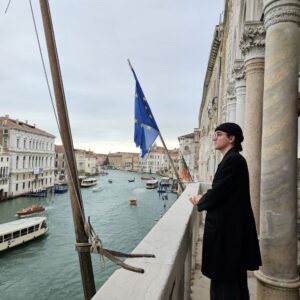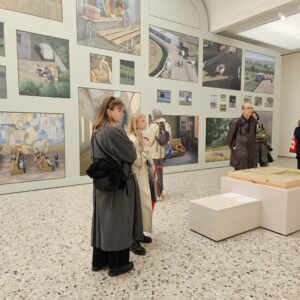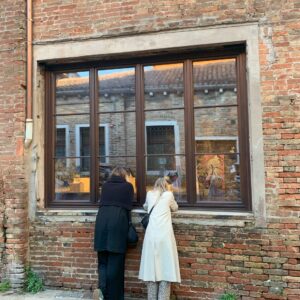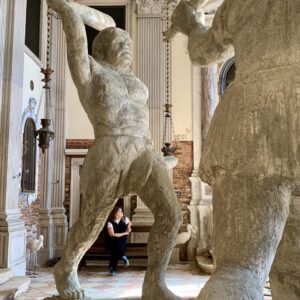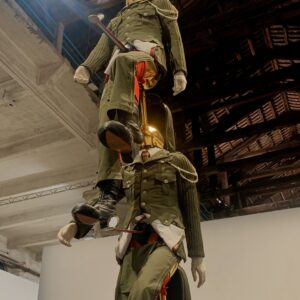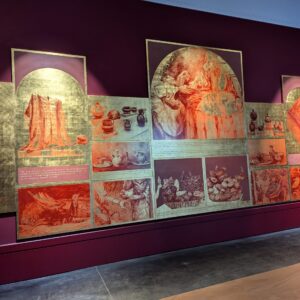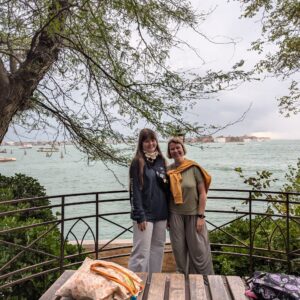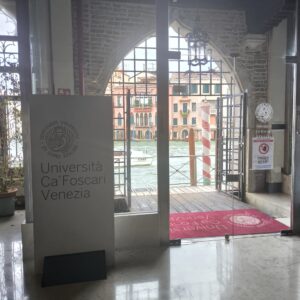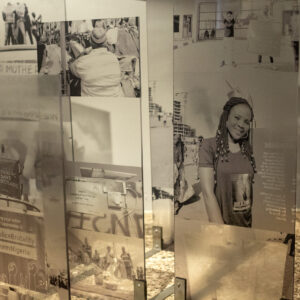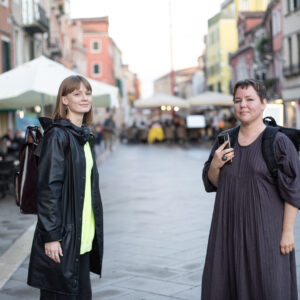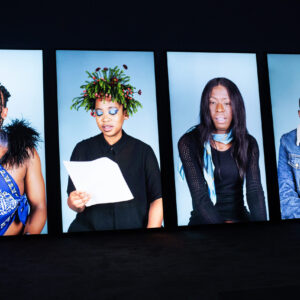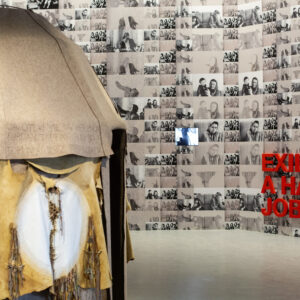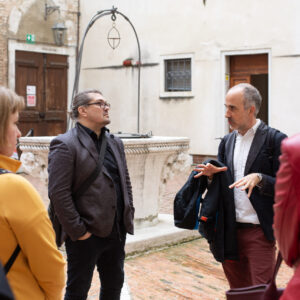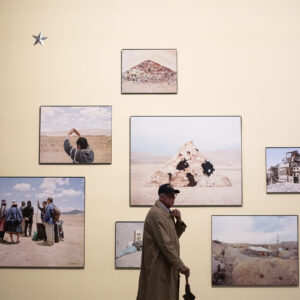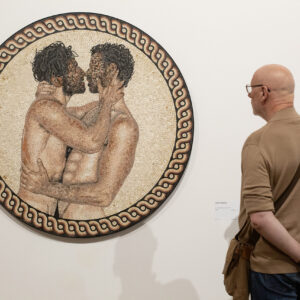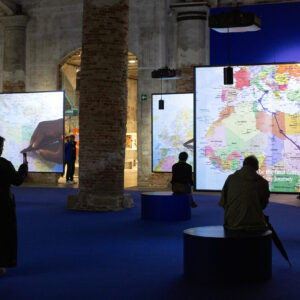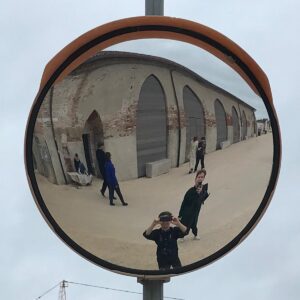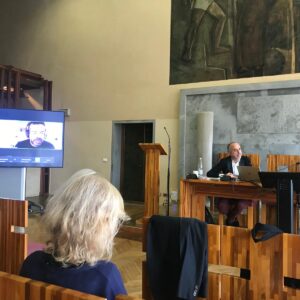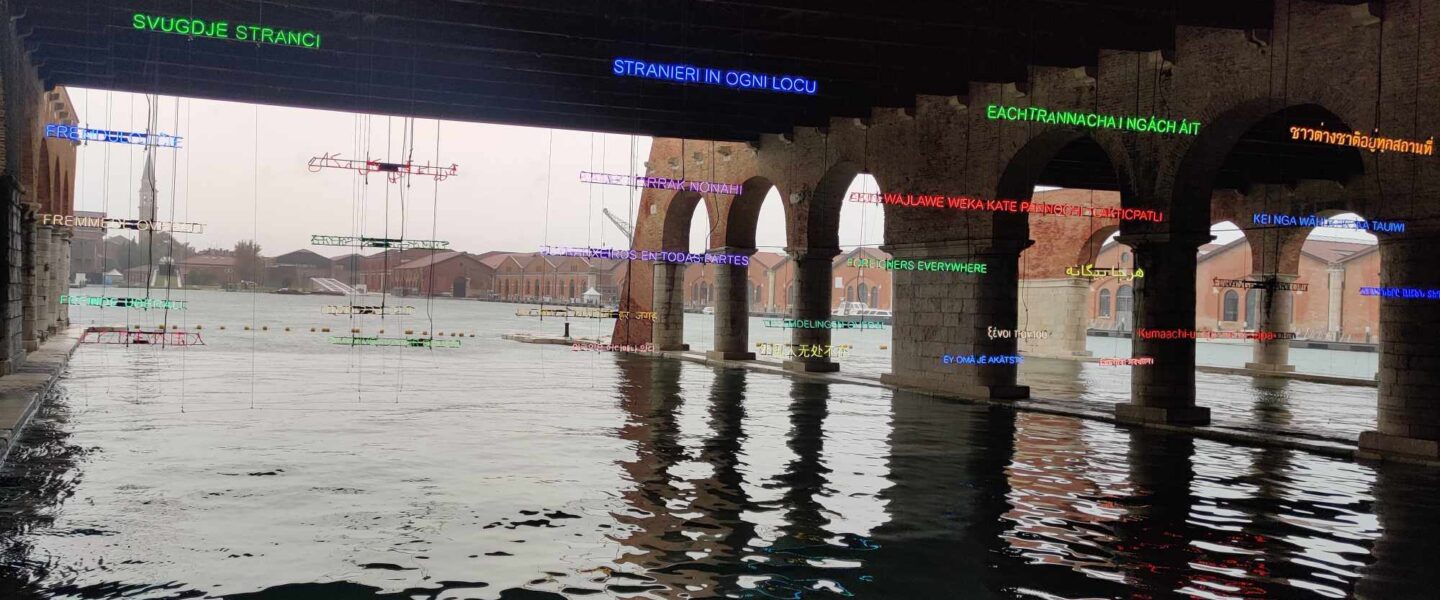
Venice 2024, by Piret Arukaevu
At the beginning of October, MA students from the Department of Art History and Visual culture, with specialisation on curating visited the 60th Venice Biennale. The main focus was on the Arsenale and Giardini exhibitions, while the rest of the time was dedicated to visiting museums and city pavilions. Students also took part in a conference at the University of Ca’Foscar: doctoral students gave presentations on their research. In the session we attended, two presentations were devoted to the Lebanese art field and the problems facing the current unstable situation. The panel was moderated by Matteo Bertelé, Associate Professor at the University of Ca’Foscar. After the presentations, he told us about university and student life in Venice. He also talked about the possibilities for closer cooperation between the EAA and Ca’Foscar.
During the trip, we held three seminars, where we discussed the content and dramaturgy of the exhibitions we visited and shared our impressions. The general opinion was that the Biennale was too much in line with the expected theme: the curator left the viewer no room for questioning or interpretation, works created in other cultural spaces were shown according to Western standards. The wording of the Biennale’s theme, “Foreigners everywhere”, also posed a problem. In practice, this took the form of an ‘ethnographic museum’ effect, which the curator did not fight. The most memorable pavilions from different countries were Estonia, Germany, France, Nigeria, the Netherlands and China. Although the Estonian pavilion was located away from the core of the Biennale’s exhibitions, in Canareggio, it was still well visited. The exhibition was housed in the baroque renovated Chiesa di Santa Maria delle Penitenti, which artist Edith Karlson used as a stage, depicting a world of mythical creatures: giants slaying a mysterious snake, fishwomen, a two-headed cat, etc.. There were many small details hidden in the church; to find them all, one had to delve into the exhibition space, which, in its layered structure, offered different possibilities for cognition and triggers different levels of experience. The exhibition was complemented by a spectacular theatrical lighting (dramaturg Eero Epner), which brought out different details from the darkness one by one. An important role was played by the sound design, which was based on Raul Saaremetsa’s contemporary arrangement of Henri Purcell’s baroque song “The Cold Song” (1691) and Edith Karlsson’s own vocal arrangement.
A lot of time was devoted to museums related to contemporary art in Venice: the Peggy Guggenheim Collection, Ca’Pesaro and others. In their free time, visitors could visit the Cathedral of San Marco with its stunning Byzantine frescoes, the Palazzo Ducale, the Gallerie dell’Accademia and the Archaeological Museum with its antiquities.
The course, led by Anders Härm, was attended by MA students Hans Alla, Karin Allik, Piret Arukaevu, Anastassia Janovskaja, Kaur Järve, Annika Haas, Emili Kelle, Kaidi Ojasoo, Hanna Õunapuu, Iris Peremees and Maria Yudina.
The review was written by: Maria Yudina, Annika Haas
Study trip was funded by:


